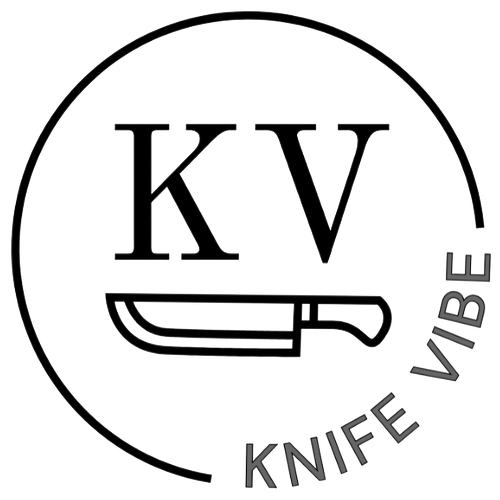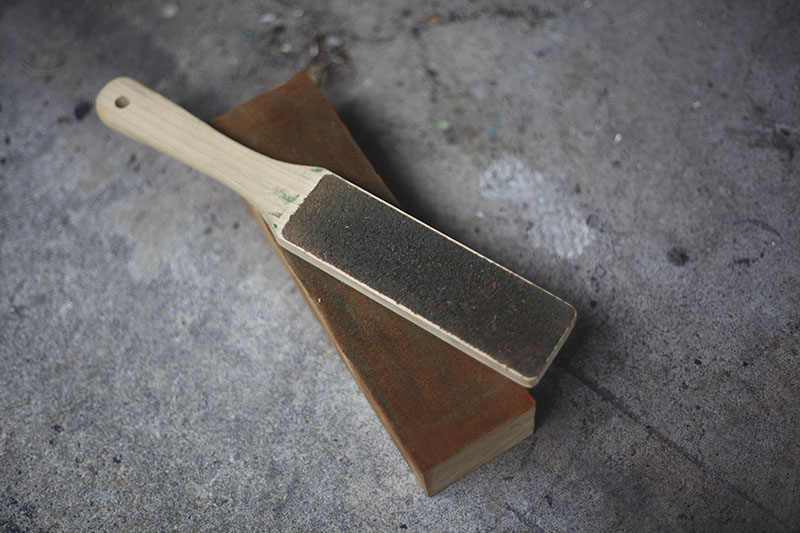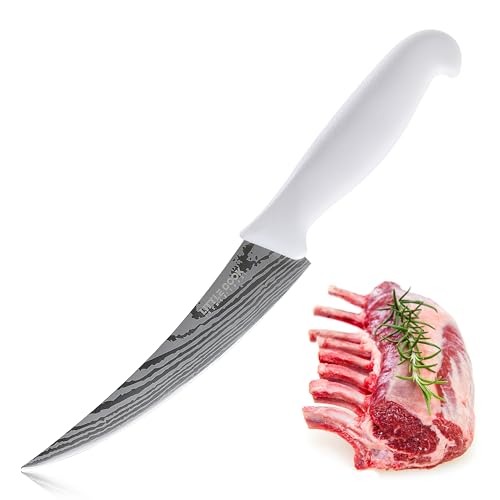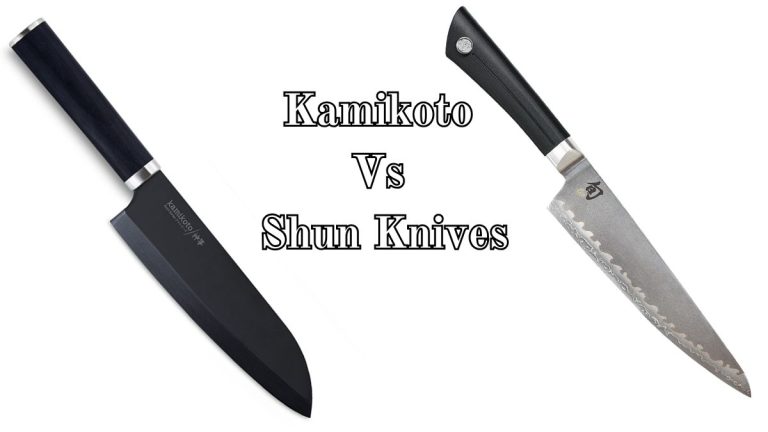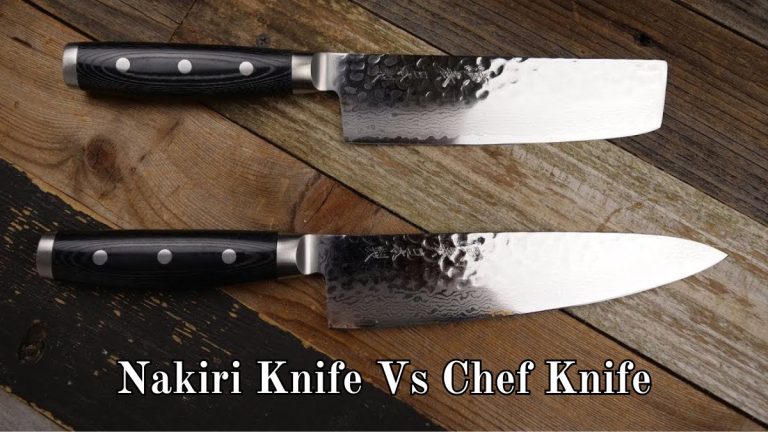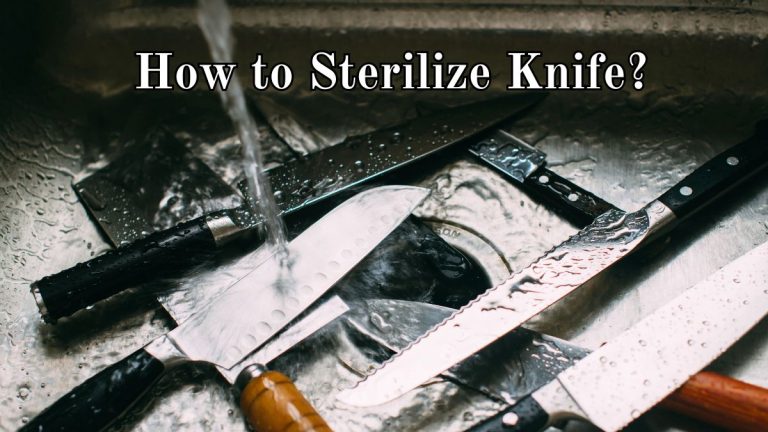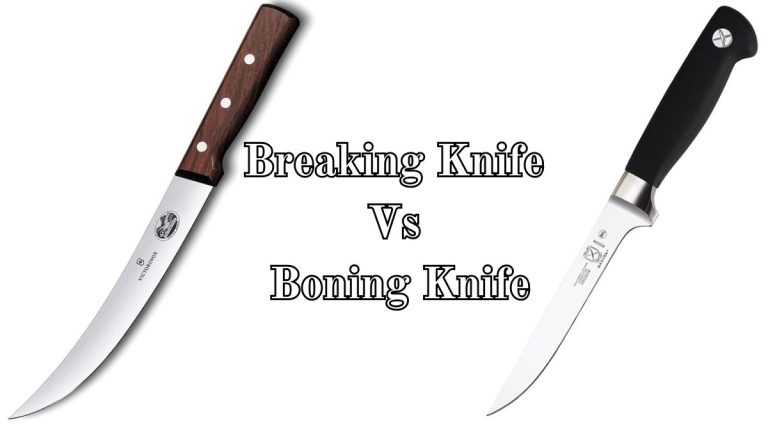How Do You Sharpen a Stainless Steel Knife: Expert Tips Revealed
Sharpening a stainless steel knife can seem tricky. But with the right tools, it’s simple.
Stainless steel knives are popular because they’re durable and resist rust. But like any knife, they need regular sharpening to stay effective. A dull knife is not only frustrating but also dangerous. It requires more force to cut, increasing the risk of slips and injuries.
Understanding how to sharpen your stainless steel knife properly ensures it stays sharp and safe to use. In this guide, we’ll explore the best methods and tools to sharpen your knife. You’ll learn how to maintain its edge and prolong its life. Ready to make your knife cut like new again? Let’s get started!
Choosing The Right Tools
Sharpening a stainless steel knife is a skill that requires the right tools. Selecting the correct sharpener and accessories ensures your knife remains in top condition. This section will guide you through the essential tools and accessories needed for sharpening.
Types Of Sharpeners
There are various types of sharpeners available, each with unique features. Understanding these options will help you choose the best one for your needs.
- Whetstones: These are traditional and highly effective. They come in different grit levels, allowing for precise sharpening.
- Electric Sharpeners: These are user-friendly and offer consistent results. Ideal for those who prefer a hassle-free option.
- Honing Rods: These are great for maintaining edge alignment between sharpenings. They do not remove much material.
- Pull-through Sharpeners: These are easy to use and are suitable for quick touch-ups. They are portable and budget-friendly.
Essential Accessories
In addition to the main sharpeners, having the right accessories can make the sharpening process easier and more effective.
- Angle Guides: These help maintain a consistent angle while sharpening. They are especially useful for beginners.
- Sharpening Oil: This reduces friction and prevents metal particles from clogging the stone. It ensures smooth sharpening.
- Cleaning Cloths: These are necessary for wiping down your knife and sharpener after use. They keep your tools in good condition.
- Protective Gloves: These provide safety by preventing accidental cuts during sharpening. Always prioritize safety.
Choosing the right tools and accessories is crucial for effectively sharpening your stainless steel knife. With the proper equipment, you can maintain a razor-sharp edge and prolong the life of your knife.
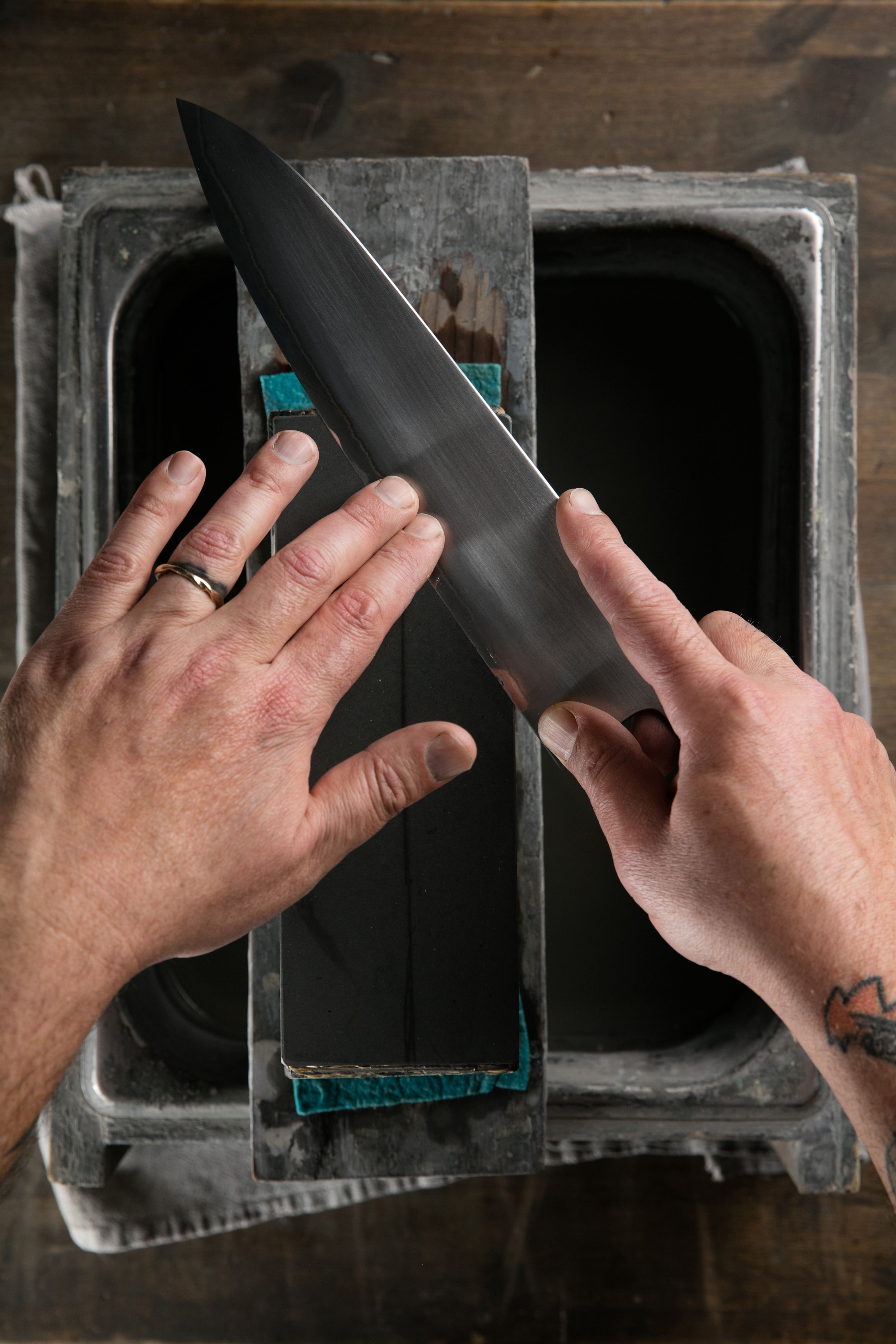
Credit: www.popularmechanics.com
Preparing Your Workspace
Sharpening a stainless steel knife requires a well-prepared workspace. A clean and organized area ensures efficiency and safety. Let’s explore how to set up your workspace for sharpening your knife.
Safety Measures
Safety should always be your top priority. Make sure your workspace is well-lit. A bright space helps you see what you’re doing. Wear protective gloves to protect your hands from cuts. Keep a first-aid kit nearby in case of accidents.
Ensure the surface you are working on is stable. A wobbly table can cause the knife to slip. This can lead to injuries. Use a non-slip mat to keep your tools in place. Clear the area of any unnecessary items. A clutter-free space reduces the risk of accidents.
Organizing Tools
Having the right tools at hand makes the task easier. Here’s a list of tools you need:
- Sharpening stone – Choose a high-quality stone for effective sharpening.
- Honest steel – Used for honing the knife after sharpening.
- Water or oil – Depending on the type of sharpening stone.
- Cloth or towel – To clean the knife and the workspace.
- Angle guide – Helps to maintain a consistent sharpening angle.
Arrange these tools within reach. This helps avoid interruptions during the sharpening process. Keep a container of water or oil nearby if your stone requires lubrication. Place a cloth or towel under the sharpening stone. This catches any excess water or oil and keeps your workspace clean.
With these preparations, you’re ready to sharpen your stainless steel knife. Remember to stay focused and take your time. Safety and organization lead to a successful sharpening experience.
Understanding Knife Angles
Understanding knife angles is crucial for sharpening stainless steel knives effectively. Use a sharpening stone at a 15-20 degree angle to maintain a sharp edge. Repeat the process on both sides for balanced sharpness.
Sharpening a stainless steel knife requires understanding knife angles. The angle affects the sharpness and durability of the blade. Different tasks need different angles. Knowing the right angle helps in achieving the best results.Optimal Angles
The optimal angle for sharpening varies. For general kitchen knives, a 20-degree angle is common. For a sharper edge, a 15-degree angle works better. Thicker blades, like hunting knives, need a 25-degree angle. Choosing the right angle ensures the knife performs well.How To Measure
Measuring knife angles can be tricky. Use a protractor to find the right angle. Place the knife on the edge of the protractor. Adjust until the blade matches the desired angle. Some sharpeners have built-in guides. These help maintain consistent angles. Practicing will make measuring easier. “`Step-by-step Sharpening Guide
Sharpening a stainless steel knife can seem daunting, but it’s essential for maintaining its performance. Follow this step-by-step guide to keep your knife in top condition. We will cover everything from the initial assessment to the actual sharpening process. Let’s dive in!
Initial Assessment
Before you start sharpening, you need to assess the knife’s current condition. Here are some steps to follow:
- Check for damage: Look for chips or cracks along the blade.
- Test the edge: Gently run your thumb along the edge. Is it dull?
- Determine the angle: Most stainless steel knives have a 15-20 degree edge.
Sharpening Process
Once you have assessed the knife, follow these steps to sharpen it:
- Prepare your tools: You will need a sharpening stone or a honing rod.
- Soak the stone: If using a water stone, soak it in water for 10-15 minutes.
- Set the angle: Hold the knife at the correct angle (15-20 degrees).
- Sharpen the blade: Move the blade across the stone in a sweeping motion.
- Alternate sides: Sharpen both sides of the blade equally.
- Hone the edge: Use a honing rod to finish the process.
- Clean the knife: Rinse and dry the knife thoroughly.
Let’s break down each step in more detail:
Prepare Your Tools
Gather a sharpening stone or honing rod. Ensure they are clean and ready to use.
Soak the Stone
If you have a water stone, soak it for 10-15 minutes. This ensures the stone is ready for sharpening.
Set the Angle
Hold the knife at a 15-20 degree angle. This angle is crucial for a sharp edge.
Sharpen the Blade
Move the blade across the stone in a sweeping motion. Do this several times.
Alternate Sides
Ensure you sharpen both sides of the blade equally. This keeps the edge balanced.
Hone the Edge
Use a honing rod to refine the edge. This step polishes and aligns the blade.
Clean the Knife
Rinse the knife under water and dry it thoroughly. This removes any residue from sharpening.
By following this guide, you’ll ensure your stainless steel knife stays sharp and efficient.
Honing The Blade
Honing the blade is a crucial step in maintaining your stainless steel knife’s edge. Honing does not remove significant material from the blade. Instead, it straightens and realigns the edge, ensuring it stays sharp and effective.
Honing Vs Sharpening
Many confuse honing with sharpening. While both processes enhance a knife’s performance, they serve different purposes.
- Honing: Realigns the blade without removing much material. It keeps the edge straight.
- Sharpening: Removes material to create a new edge. It reshapes a dull blade.
Using A Honing Rod
Using a honing rod is straightforward. Follow these steps to hone your stainless steel knife effectively:
- Hold the honing rod vertically with the tip resting on a stable surface.
- Grip the knife handle firmly. Place the blade at a 20-degree angle against the rod.
- Draw the blade down and across the rod, maintaining the angle. Start at the heel and finish at the tip.
- Repeat on the other side of the blade. Alternate sides for 5-10 strokes each.
- Wipe the blade clean with a cloth. Check the edge for straightness.
For best results, hone your knife regularly. This practice keeps the edge aligned and sharp, reducing the frequency of sharpening.
Testing Sharpness
Ensuring that your stainless steel knife is sharp is essential. A sharp knife improves cutting efficiency and safety in the kitchen. There are several methods to test the sharpness of your knife. Two effective tests include the Paper Test and the Tomato Test.
Paper Test
The Paper Test is a quick and easy way to check sharpness. Hold a piece of paper vertically and try slicing through it with your knife. A sharp knife will cut through the paper with little effort. If the knife struggles or tears the paper, it needs sharpening.
| Sharpness Level | Paper Cutting Result |
|---|---|
| Sharp | Clean, effortless cut |
| Dull | Struggles, tears paper |
Tomato Test
Another great method is the Tomato Test. Tomatoes have a delicate skin that can easily show a knife’s sharpness. Place a tomato on a cutting board. Try slicing through it without applying much pressure. A sharp knife will penetrate the skin and make a clean slice. If it squishes the tomato before cutting, it’s time to sharpen your knife.
- Sharp Knife: Penetrates skin, clean slice
- Dull Knife: Squishes tomato, uneven cut
Using these tests regularly ensures your knives stay in top condition. A sharp knife is a safe and effective tool in any kitchen.
Maintaining Sharpness
Maintaining the sharpness of a stainless steel knife is crucial for efficiency and safety in the kitchen. Proper care and regular maintenance will extend the life of your knife and make cutting tasks easier. Let’s delve into some essential practices to keep your knife sharp and ready for use.
Regular Honing
Regular honing helps keep your knife’s edge aligned. This prevents the blade from becoming dull. You should hone your knife before or after each use.
Use a honing rod for this task. Hold the rod vertically with its tip on a stable surface. Place the knife at a 20-degree angle to the rod. Swipe the blade down the rod from base to tip. Repeat this process on the other side of the blade.
Honing does not sharpen the blade. It maintains the edge between sharpening sessions. Make it a habit to hone regularly.
Proper Storage
Proper storage is essential for maintaining sharpness. Knives stored loosely in drawers can get damaged. They can also become dull quickly.
Consider using a knife block. This keeps your knives organized and safe. Magnetic strips are another good option. They hold the knives securely while saving space.
Blade guards are useful for storing knives in drawers. They protect the blade from contact with other utensils. This helps keep the edge intact.
Never leave knives in the sink. Water and other utensils can damage the blade. Always dry and store them immediately after washing.
Implementing these practices will keep your stainless steel knife sharp. Regular honing and proper storage are simple steps with significant benefits.
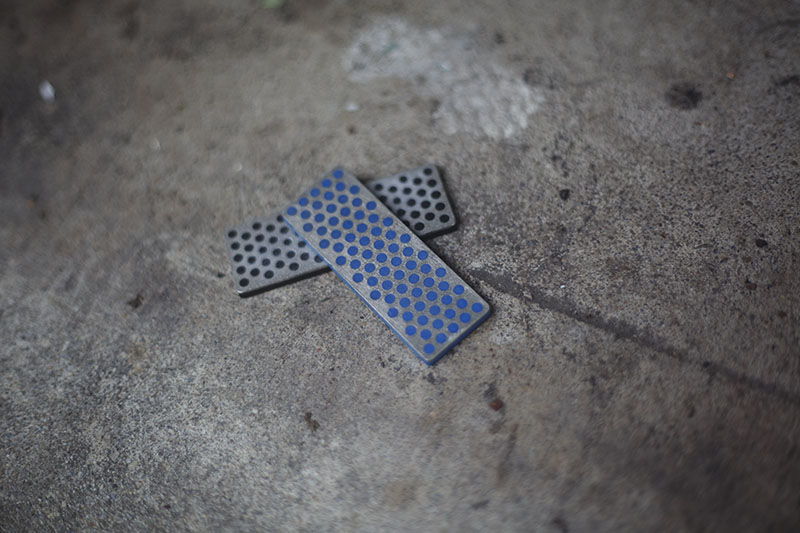
Credit: morethanjustsurviving.com
Common Mistakes To Avoid
Sharpening a stainless steel knife requires skill and patience. Many people make common mistakes that can damage the blade. By understanding these mistakes, you can keep your knives in top condition. Let’s explore some of the common pitfalls.
Incorrect Angles
One common mistake is using the wrong angle. The angle at which you sharpen your knife is crucial. Many people sharpen their knives at too steep or too shallow an angle. This can lead to a dull edge or even damage the blade. A good rule of thumb is to use an angle of about 20 degrees. Consistency is key. Keep the angle steady for the best results.
Over-sharpening
Over-sharpening is another common error. Sharpening your knife too often can wear down the blade. This reduces the lifespan of your knife. Sharpen only when necessary. Check the edge of your knife regularly. If it cuts well, it does not need sharpening. Use a honing rod to maintain the edge between sharpenings. This can help avoid over-sharpening.
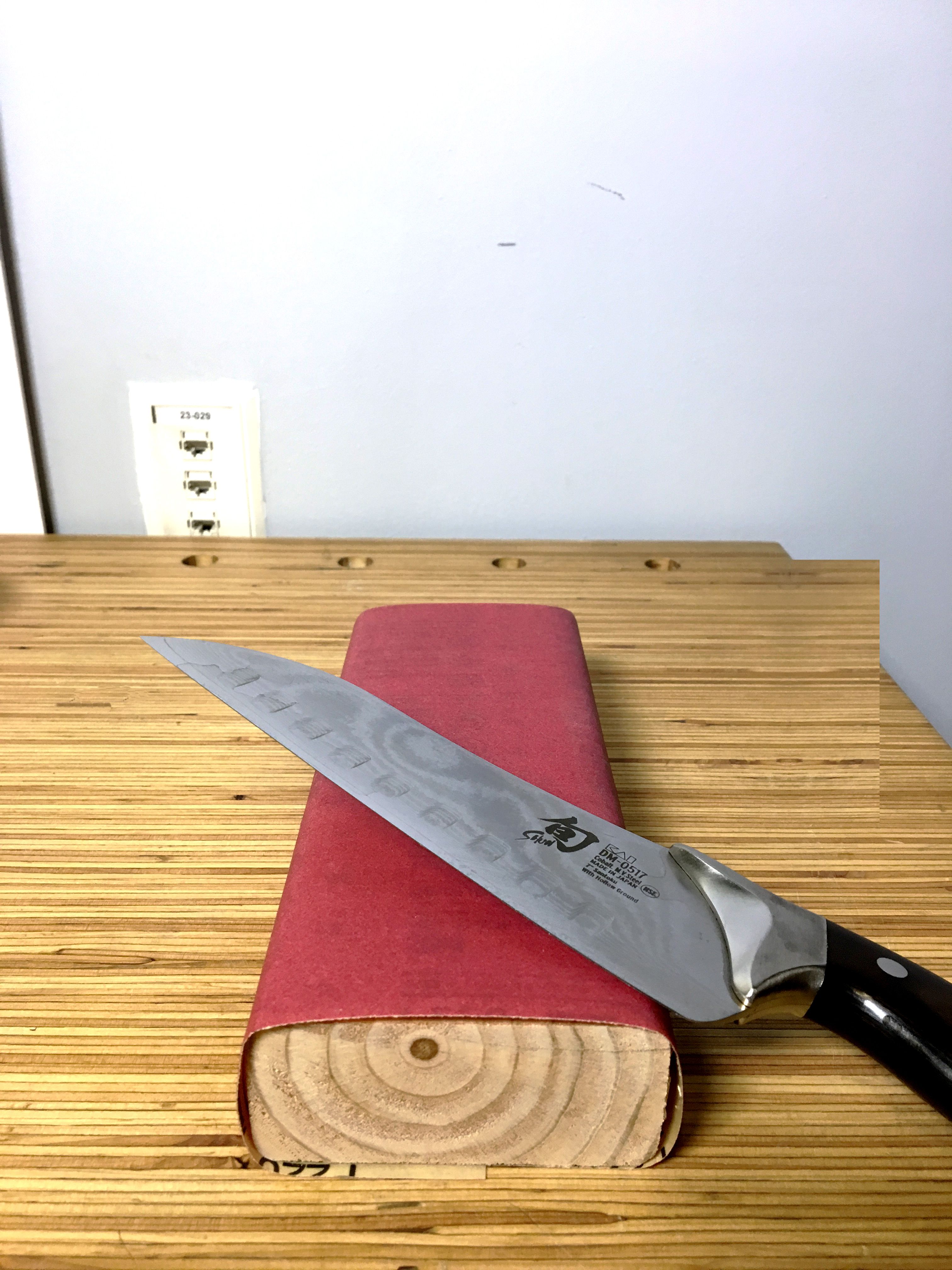
Credit: www.popularmechanics.com
Frequently Asked Questions
How Often Should You Sharpen Stainless Steel Knives?
Stainless steel knives should be sharpened every few months. Regular use and maintenance can help maintain their sharpness. Use a honing rod to keep the edge aligned.
What Tools Are Best For Sharpening Stainless Steel Knives?
Whetstones, electric sharpeners, and honing rods work best. Whetstones offer precision, while electric sharpeners are quick. Honing rods help maintain the edge between sharpening.
Can You Sharpen Stainless Steel Knives At Home?
Yes, you can sharpen stainless steel knives at home. Use a whetstone or electric sharpener. Follow proper techniques to ensure safety and effectiveness.
Is Stainless Steel Hard To Sharpen?
Stainless steel can be harder to sharpen due to its hardness. However, using the right tools and techniques makes it manageable. Regular maintenance helps.
Conclusion
Sharpening a stainless steel knife is essential for kitchen safety and efficiency. Regular maintenance ensures your knife performs well. Use the right tools and follow proper techniques. Practice makes perfect. A sharp knife saves time and effort. Remember to sharpen your knife often.
Consistent care extends the knife’s lifespan. Now, you know how to keep your knife sharp. Try these tips and enjoy smoother cutting. Happy cooking!
